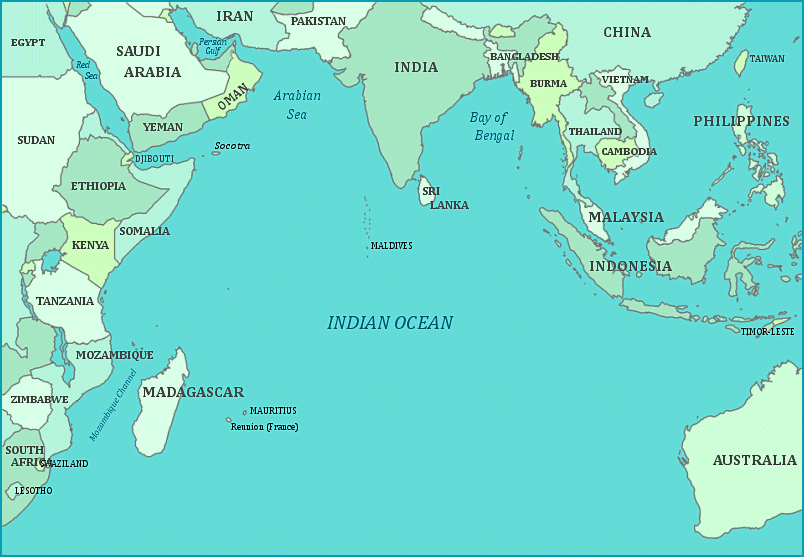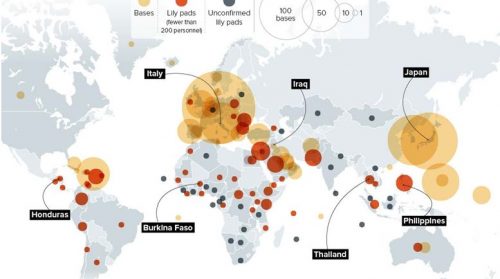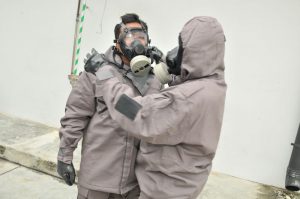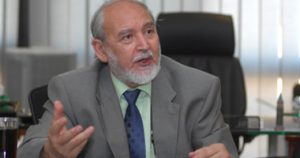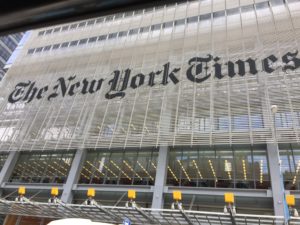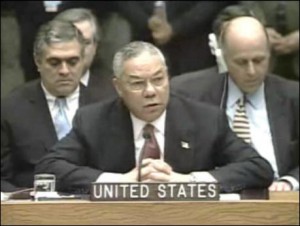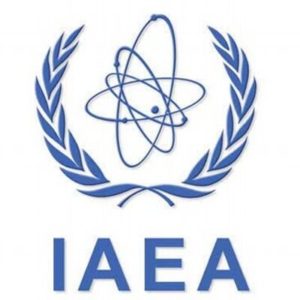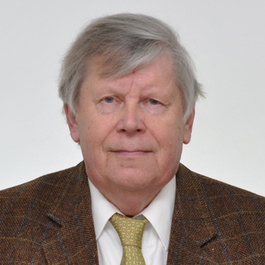In Harare, Bulawayo and smaller Zimbabwean cities, hundreds of thousands of citizens joyfully took to the streets on Saturday, November 18, approving a Zimbabwe Defence Force (ZDF) military semi-coup that resolves a long-simmering faction fight within the ruling party and ends the extraordinary career of Robert Mugabe at the age of 93.
Initially refusing to resign, his rambling speech the following evening revealed a man either out of touch with reality, or attempting to compel from his enemies a full-fledged coup, or – as CNN speculated – delaying to ensure legal immunity and protection of his property from confiscation. Still, he faces a parliamentary impeachment process on November 21.
After more than 37 years in power in the Southern African country he led to liberation in 1980, Mugabe is being replaced by his long-standing Zimbabwe African National Union-Patriotic Front (Zanu-PF) comrade, Emmerson Mnangagwa (aged 75). On Sunday at Zanu-PF’semergency central committee meeting, Mnangagwa was made president. To ease his departure, Mugabe might be offered exile in South Africa where his family and cronies also possess abundant luxury real estate, such as a seaside mansion near Durban’s airport.
But concerns immediately arise that celebration of the coup and at least momentary popular adoration of the army will relegitimise Mnangagwa’s brutal Zanu-PF network and thus slow a more durable transition to democracy and economic justice. Aside from a mass-based uprising to carry on Saturday’s momentum, the only other safeguard would be the (highly unlikely) appointment of a genuine,all-in national unity government, one that would acquire desperately-needed cash from both China and the main Western donors in Washington and the European Union.
A coup de Grace by ‘Crocodile’ Mnangagwa
In the context of a worsening financial liquidity crunch, the November 15 coup was catalyzed by Mugabe’s political over-reach: attempting to elevate his shopaholic wife “Gucci Grace” (aged 52) to the vice-presidency with the obvious intention of succession. Marching through the capital city Harare three days later, anti-Mugabe protesters carried professionally-produced signs including the message, “Leadership is not sexually transmitted.”
Widely despised for a role akin to Lady Macbeth’s, Grace Mugabe’s faction of Zanu-PF is known as “Generation 40” (G40), implying the readiness of a younger replacement team within the ruling party. Mugabe himself was most closely aligned to this group. In contrast, Mnangagwa leads the older “Team Lacoste” faction, whose logo-based signifier is his revealing nickname, “The Crocodile.”
Mnangagwa is widely mistrusted due to his responsibility for (and refusal to acknowledge) 1982-85 “Gukhurahundi” massacres of more than 20,000 people in the country’s western provinces (mostly members of the minority Ndebele ethnic group, whose handful of armed dissidents he termed “cockroaches” needing a dose of military “DDT”);his subversion of the 2008 presidential election which Mugabe initially lost; his subsequent heading of the Joint Operations Committee secretly running the country, sabotaging democratic initiatives; as well as for his close proximity– as then Defence Minister – to widespread diamond looting from 2008-16. Mugabe himself last year complained of revenue shortfalls from diamond mining in eastern Zimbabwe’s Marange fields:
“I don’t think we’ve exceeded US$2 billion or so, and yet we think that well over US$15 billion or more has been earned in that area.”
Not only was this vast scale of theft confirmed by local anti-corruption campaigner Farai Maguwu. In order for Mnangagwa to establish the main Marange joint venture – Sino Zimbabwe – with the notorious (and now apparently jailed) Chinese investor, Sam Pa, the army under Mnangagwa’s rule forcibly occupied the Marange fields. In November 2008, troops murdered several hundred small-scale artisanal miners there. (At a massacre solidarity visit to Marange on November 10, two dozen progressive activists – including Maguwu and 21 foreigners from a People’s Dialogue network that includes Brazil’s Movement of Landless Workers – were arrested for trespassing, though they were later released after each paid a $100 fine.)
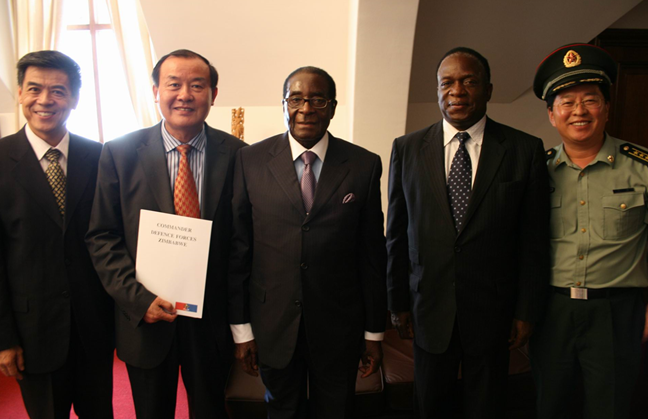
Mnangagwa had fought Rhodesian colonialism in the 1970s, and soon became one of Mugabe’s leading henchmen, rising to the vice presidency in 2014. But Mugabe fired him on November 6, signaling Grace’s ruthless ascent in spite of Chiwenga’s repeated warnings since early 2016. Three years ago, with Grace egging him on, Mugabe sacked another close revolutionary-era ally, vice president JoiceMujuru (62). (Mujuru subsequently launched a new party which subsequently showed no capacity to influence events, but she was expected to eventually forge an alliance with democratic opposition forces to contest the scheduled 2018 election.)
What with both economic and political degeneration accelerating, Mnangagwa’s firing was the catalyst for an emergency Beijing trip by his ally, army leader Constantino Chiwenga (61), for consultations with the Chinese army command. Mnangagwa received military training in China during Mao’s days, and China today has substantial assets in Zimbabwe, including repeated weapon sales and stakes in tobacco, infrastructure and mining, as well as its retail imports that continue to deindustrialize Zimbabwean manufacturing.
Beijing’s Global Times, which often parrots official wisdom, was increasingly wary of Mugabe. According to a contributor, Wang Hongwi of the Chinese Academy of Social Sciences,
“Mnangagwa, a reformist, will abolish Mugabe’s faulty investment policy. In a country with a bankrupt economy, whoever takes office needs to launch economic reforms and open up to foreign investment… Chinese investment in Zimbabwe has also fallen victim to Mugabe’s policy and some projects were forced to close down or move to other countries in recent years, bringing huge losses.” (Hongwi did not mention whether Sam Pa represents the ethos of such Chinese investors.)
The sense thatMnangagwacould be a Zimbabwean version of market-liberaliser Deng Xiaoping – following Mugabe’s Mao routine – prevails in such circuits. The big question is whether, if Mnangagwa refuses to consider a unity government scenario, China will make available hard currency of a few hundred million dollars (it has more than $3 trillion in reserves) to stem the liquidity crisis.
A sense of such new benefactors’ potential generosity must have played a role in the coup plotters’ calculations. For Mnangagwa is not only being toasted in Beijing, but also by Tory geopolitical opportunists in London. Although many Britons object, their ambassador to Zimbabwe Catriona Laing has for three years attempted to “rebuild bridges and ensure that re-engagement succeeds to facilitate Mnangagwa’s rise to power” with a reported “$2 billion economic bail-out.”
The coup calculus
Chiwenga avoided an attempted police arrest at the Harare airport upon his return from Beijing. As the coup plan – initially scheduled for December prior to Zanu-PF’s next congress – was pushed forward, on November 13 he cautioned against “reckless utterances by politicians from the ruling party denigrating the military” – whom he termed “counter-revolutionary infiltrators” – and he insisted that Mugabe’s “targeting members of the party with a liberation background must stop.” Snubbing this warning the next day, the G40 maintained control of Zanu-PF’s machinery and issued a provocative statement highly critical of Mnangagwa and Chiwenga.
For such purposes, Mugabe’s erratic spin-doctor for most of the last two decades was Jonathan Moyo, a former US-trained academic. Moyo was responsible for some of Zanu-PF’s most extreme rhetorical attacks on political opponents, including media crackdowns a decade ago. But his prolific twitter feed suddenly went quiet on November 14 once ZDF tanks rolled into the city. The army rapidly occupied Mugabe’s main office and the national broadcaster, announcing to the country that the ZDF was in command and would ‘protect’ Mugabe while searching out the ‘criminals’ surrounding him. Moyo had repeatedly angered Chiwenga, even alleging several times that his 2015 doctoral thesis in ethics at the University of KwaZulu-Natal was authored by someone else.
The only armed resistance apparently came from a few Mugabe loyalists in the police force and Central Intelligence Organisation, and from Finance Minister Ignatius Chombo’s bodyguards, one of whom was murdered by army troops during Chombo’s arrest. Moyo and another G40 leader once considered potential presidential material, Saviour Kasukuwere, were apparently picked up early on November 15 and taken to the army barracks. According to an insider interviewed by journalist SiphoMasondo,
“People are romanticising the coup and saying it was not bloody. It was damn bloody. People are being beaten badly.”
On November 16, the society’s nervousness was expressed in a tweet by TendaiBiti (aged 51), a social democrat who in 2014 split from leading opposition figure Morgan Tsvangirai (65 and undergoing cancer treatment), after having served as finance minister in the 2009-13 government of national unity: “Over the years in making the case for a National Transitional Authority, have written a lot about the possibility of an implosion in Zim. However nothing I have written or read prepared me for the surreal reality of the last two days. It has simply been a nightmare, a period of uncertainty, anxiety and doubt.”
But after the dust began to settle and a mass march was called for November 18, Biti was ecstatic:
“Today the wananchi [citizenry] bathed in freedom. She was on the street in her thousands. Today the citizen was let loose and not a single stone was thrown. Not a single window was broken. Love and solidarity were palpable. You could cut the citizens’ happiness with a hack saw. Today the tank was an instrument of resistance and not of power retention. Tomorrow might be a nightmare but today we breathe freely.”
That nightmare – Mnangagwa’s new-found ability to relegitimise Zanu-PF with army support – is now unfolding, with only an economic meltdown to compel him to negotiate.
Economic meltdown or government of national unity?
That nightmare scenario reflects the dangers of post-Mugabe Zanu-PF rulers maintaining old habits, combining state asset stripping and dictatorial repression. This is most likely, given the traditions Mnangagwa and Chiwenga represent. Explained one pro-Mnangagwa Zanu-PFleader, Patrick Chinamasa,
“We have the majority in Parliament, we can expel the President alone and we are the ruling party, so where does a coalition come in? We don’t need them.” (In fact, to impeach Mugabe,as scheduled on November 21, a two-thirds majority will be required– so technically he is wrong, but it is the ruling party’s go-it-alone attitude that worries Zimbabweans.)
If donor aid to the new regime is not forthcoming, a desperation mentality will rapidly emerge, for economic barriers to bureaucratic looting are periodically reached in Zimbabwe. For example, when the world’s worst hyperinflation (500 billion percent) wiped out the former currency in 2008, new arrangements were required: in that case, the turn to the US dollar and rand. The only other option is recovering looted wealth by Mugabe and his cronies – but such an asset search might prove highly embarrassing to Mnangagwa and Chiwenga, too.
Late last year, $200 million worth of a dubious new currency (the ‘Bond note’) was introduced by the Zimbabwe Reserve Bank. The reason was that officially-accepted US dollars and South African rands, which most Zimbabweans have used since 2009, fell into increasingly short supply, causing payment-system blockages and renewing fear of hyper-inflation.
The elites and masses alike are withdrawing cash from the banks as fast as possible. They are now limited to as little as $20 daily withdrawals from their accounts, and regulations are periodically imposed to compel electronic purchases and incentivise cash savings. Instead, hoarding scarce hard currency under the matrass represents one form of storing value during crisis, since placing such funds in formal bank accounts risks Reserve Bank seizure. Other survival strategies include rapid purchases of consumer durables each pay day. There is also raging speculation in Bitcoin, real estate and the Zimbabwe Stock Exchange, which was the world’s fastest-rising bourse in 2017 despite the economic decline, until last week when the market crashed.
If fresh financial liquidity is not provided in coming weeks, the formal economy and vast informal sector will suffer worse payments freezes and the black market will flourish to the point of panic, just as in late 2008. For nearly two decades, the Zimbabwe government has been in default on more than $9 billion of international debt and today is failing to pay foreign corporations the profit remittances they are due. Even the state’s strict restriction against importing those basic goods that should instead be manufactured within Zimbabwe has failed to ease the hard-currency shortage.
It appears that in this context, only the Zimbabwe government’s full-fledged relegitimation can attract sufficient foreign aid to avoid an economic meltdown. For this purpose, an ideal-type‘national unity’ scenario – which appears unlikely, but nevertheless worth contemplating – would have Chiwenga quickly return his troops to the barracks and Interim President Mnangagwa appoint two Zanu-PF vice presidents: Mujuru and, for ethnic balance, Dumisa Dabengwa (77) from the Zimbabwe African People’s Union party. The latter party is a revival of one Mugabe had crushed and co-opted in 1987, when he unsuccessfully attempted to establish one-party rule. Another Mnangagwa ally anticipated to rise to the top tier is Sydney Sekeramayi (73).
But most importantly, the unity regime would need to include at least three recently-reunited Movement for Democratic Change (MDC) leaders: Tsvangirai as prime minister (his 2009-13 role), Biti in the finance ministry to raise support from Western donors, and Welshman Ncube (56) who enjoys widespread support among the Ndebele people.
If elections are indeed held as scheduled before mid-2018, the MDC could well defeat Zanu-PF in a free-and-fair vote. But whether and how quickly a ‘fresh start’ vote can be scheduled depends upon MDC negotiating power and the sense by Mnangagwa and his military stalwarts that in such a poll, they could repeat their decisive 2013 win (due largely to army mobilisation funded by the diamond theft), or steal it, as occurred in 2008 when Tsvangirai initially defeated Mugabe by more than 10% of the vote.
Not only are donors required, international tolerance will be needed on the country’s foreign debt and profit-repatriation arrears. In addition, there must be buy-in from regional neighbours in the Southern African Development Community (SADC), led this year by South Africa’s Jacob Zuma. Unlike earlier election controversies when – aside from Botswana’s leader – all of SADC and most of the African Union’s (AU’s) leaders supported Mugabe (leading Biti to term the larger grouping a ‘trade union of dictators’), no one has objected to the coup.
Indeed, following Chiwenga’s word play, African rulers won’t even term it a “coup” since that would lead to Zimbabwe’s automatic suspension from the AU plus new sanctions. Zuma and Mugabe have historically been very close allies but tellingly, neither the South African president nor his ex-wife Nkosazana Dlamini-Zuma – the former AU chairperson, now campaigning to succeed Jacob as ruling party leader in next month’s internal election – stepped in to defend Mugabe from Chiwenga.
Still, a widespread sentiment evident in urban Zimbabwe is that Zuma and SADC should stay out of the negotiations, given those historic ties – reflected in Zuma’s approval of Grace’s flight from justice after she beat up a Johannesburg model in August – as well as sub-imperialist power regularly wielded by Pretoria in the region.In any event, South Africa’s fiscal crisis is rapidly worsening as further junk ratings are anticipated from credit rating agencies in coming days, so it is far less likely that Zuma can chip in financial aid.
Zuma is also criticised for not halting periodic upsurges of anti-Zimbabwean xenophobic violence in South Africa, which in 2015 led to angry protests at South Africa’s High Commission in Harare. Meanwhile on November 18 at the Zimbabwe Embassy in Pretoria and High Commissions in Johannesburg and Cape Town (as well in London), thousands of protesters marched in solidarity with the Harare and Bulawayo rallies.
Bankruptcy for capitalism –and also for democracy and social justice?
Even before a new aid package is negotiated, two of the most crucial economic decisions a national unity government will face are whether to continue introducing $300 million worth of fast-devaluing Reserve Bank currency into the banking system this month, and whether to pay a massive fine to the US Treasury’s Office of Foreign Assets Control.Donald Trump’s Treasury Secretary, Steven Mnuchin (formerly of Goldman Sachs), is demanding immediate payment of $385 million – down from an initial $3.8 billion – by the country’s largest bank, Commercial Bank of Zimbabwe, following more than 15,000 separate cases of sanctions busting that date from the Bush and Obama regimes’ punishment of Mugabe for human rights violations.
In a third financial controversy, Biti suspects that his 2013-17 successor, Patrick Chinamasa (who was reshuffled from finance last month, into a new cybersecurity portfolio), fraudulently issued Treasury Bills and backed up the new currency with illegitimate African Export-Import Bank loans. Biti is calling for a full debt audit. To make matters worse, those whose savings were in the Harare stock market discovered that the coup week’s uncertainty left them 18% poorer, as the shares’ capital value fell from $15.1 billion to $12.4 billion, caused mainly by international investor panic selling.
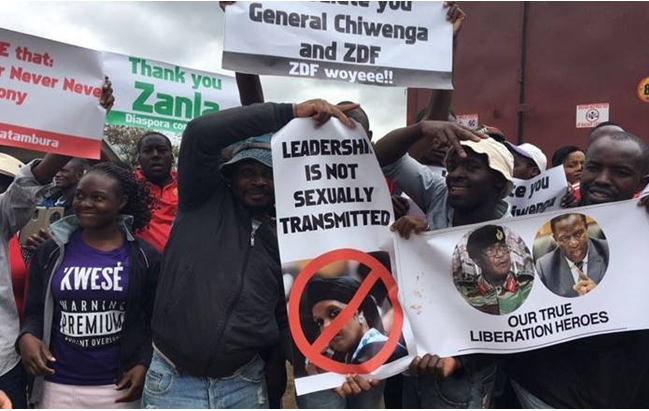
Meanwhile, democratic activists are concerned that what once had been a formidable set of progressive civil society organisations – trade unions, urban community groups, women and youth – back in 1999 when their “Working People’s Convention” launched the MDC, can no longer influence this transition. The last attempt in 2016, a “This Flag” meme launched by local pastor Evan Mawarire, soon ran out of steam.
Moreover, warns Maguwu in a new essay, “Dawn of a New Error!,” the MDC is a “weak, bankrupt and defeated opposition” and if it enters a national unity government, will be co-opted just as from 2009-13. He begs his readers to recall that “Zimbabweans have struggled to replace Mugabe with a popular democratically elected leader since 2000. These efforts have been dashed by the military and the entire security establishment.”
But now that celebratory citizens have given the palace coup far more legitimacy than it deserves, it becomes s even more vital for progressives committed to democracy and social justice to redouble grassroots organising and generate crystal-clear demands, especially in the urban areas. (The rural peasantry suffers far tighter systems of socio-political control by Zanu-PF, so have never been reliable allies.)
If not, says International Socialist Organisation of Zimbabwe leader Munyaradzi Gwisai,
“There’s a potential that the Mnangagwa, MDC elites and the military could be part of a national unity government. Ultimately they are also scared of the working class, because austerity could lead to revolts.”
As Harare activist Tom Gumede wrote me privately on November 17 just before the masses hit the streets, “This is the time for workers, students and the poor of Zimbabwe to build a formidable unity for the future beyond Mugabe. A fractured population will lose the battles of the future… Another Zimbabwe is Possible. Through mass action the resistant Mugabe will finally be dislodged. His current cover under the Constitution will be blown up when people have spoken beyond the military takeover… Viva People Power and No to Elitist Transitions.”
***
Patrick Bond is professor of political economy at the University of the Witwatersrand. He is the author of Uneven Zimbabwe: A study of finance, development and underdevelopment (1998) and co-author of Zimbabwe’s Plunge: Exhausted nationalism, neoliberalism and the search for social Justice(2003).
All images in this article are from the author.
